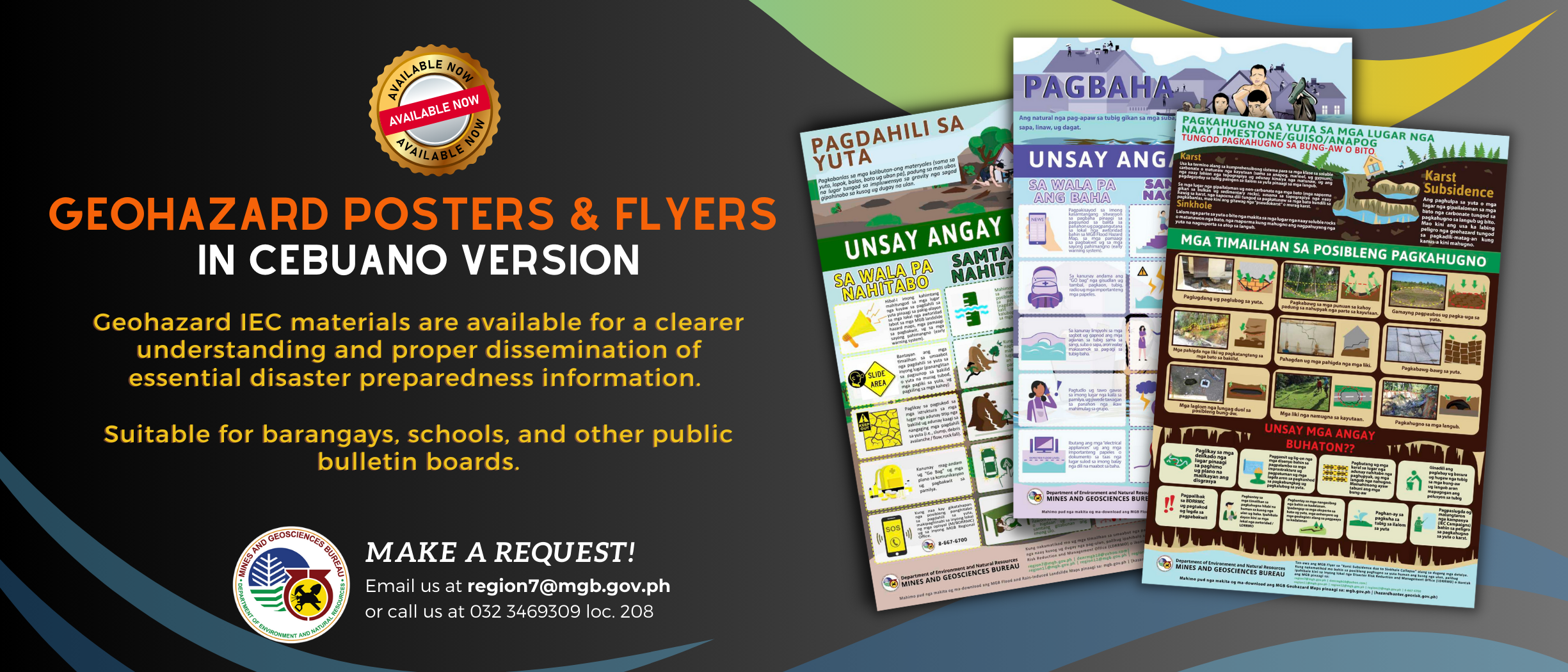The Mines and Geosciences Bureau (MGB) 7 of the Department of Environment and Natural Resources Office (DENR) recently urged the local chief executives to get themselves familiarized with the geohazard maps, and implement the necessary measures to reduce the impact of natural disasters on people’s lives and properties.
This, as the DENR 7 made the appeal in the wake of reports by the weather bureau that heavier rains are still expected in the coming days.
“Our local officials should look into very seriously our geohazard maps by taking note of areas that are identified to be highly susceptible to flooding and landslides,” said MGB 7 Regional Director Loreto B. Alburo.
Alburo also strongly recommended to local government units (LGUs) to prohibit habitation in areas declared as “highly susceptible” to flooding and landslides based on the results of the mapping by the MGB 7 to protect people’s lives.
The MGB has already completed the geohazard assessment and mapping throughout the region covering 3,003 barangays, and has distributed geohazard maps with a scale of 1:50,000 to all local government units with a geohazard threat advisory.
“We have also made the necessary orientation of our local officials. Essentially, we ask them to revisit their geohazard maps, get into the areas declared as highly susceptible to flooding and landslide, and consider these in their disaster plans,” said DENR 7 Regional Director Dr. Isabelo R. Montejo.
Montejo added this is the new ‘normal’ where rains have become heaviest that could result to massive flooding in low-lying areas and along the rivers and creeks.
“The said maps can also be viewed and downloaded free of charge on the websites of the DENR (www.denr.gov.ph), the MGB (www.mgb.gov.ph), the Philippine Information Agency (www.pia.gov.ph), and the Environmental Science for Social Change (www.essc.org.ph),” Montejo added.
On the MGB geohazard maps, landslide-prone areas are marked red and flood-prone areas are purple.
“We should not be complacent on this matter as this is very important to saving lives,” Montejo said.
Also, in Cebu City, 19 barangays are highly susceptible to landslides, namely, Lusaran, Binaliw, Guba, Budlaan, Malubog, Buot-Taup, Busay, Sirao, Taptap, Tagbao, Tabunan, Pung-ol Sibugay,Sudlon II, Sudlon I, Sinsin, Buhisan, Pamutan, Sapangdaku, and Adlaon.
Barangays Tagjaguimit, Alpaco, Balirong, Mayana, Naalad, and Cogon in City of Naga.; 11 barangays in Balamban: Hingatmonan, Lamesa, Luca, Ginatilan, Cabasiangan, Matun-og, Cansomoroy, Gaas, Magsaysay, Cabagdalan, and Duangan.
Five barangays in Toledo City: Tungkay, Pangamihan, Bagacay, Loay and Don Andres Soriano; Lamac in Pinamungahan; Five barangays in Asturias: Agbanga, Baye, Bairan, Kanluangan, and Sak-sak.
All mountain barangays in Talisay City, particularly, Manipis; Brgy. Doldol, Purok 3 in Dumanjug; and Cansalonoy in Ronda.
Meanwhile, storm surge-prone areas are Arpili, Balamban; Tungkil, Minglanilla; Talisay, Maricaban, and Kinatarcan, all in Santa Fe; Tarong, Mancilang, and Codia, all in Madridejos; Patao and Pitogo in Bantayan; and Tanke in Talisay City.
Alburo said there are five barangays in Cebu City that are considered to be most hazardous to flooding and these are Kasambagan, Kinasang-an, Labangon, Mabolo, Bonbon, and Cebu City downtown areas and along the Guadalupe River; and seven barangays in Mandaue City to include Subangdaku, Mantuyong, Umapad, Opao, Alang-alang, Guizo, and Pakna-an.






